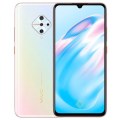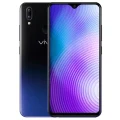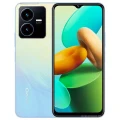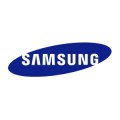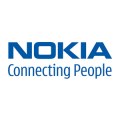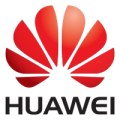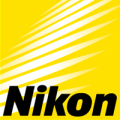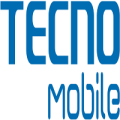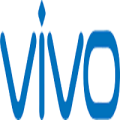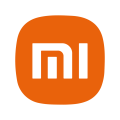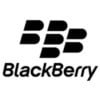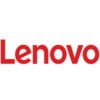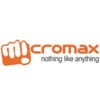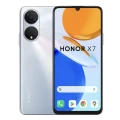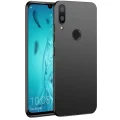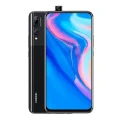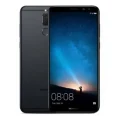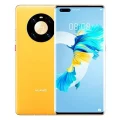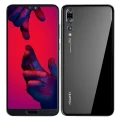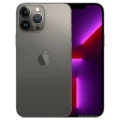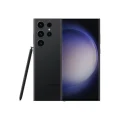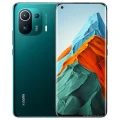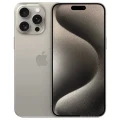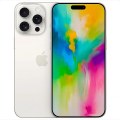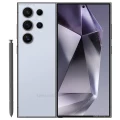Vivo Y93
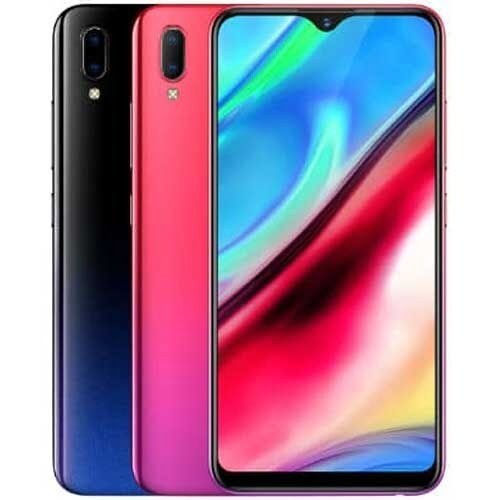


Vivo Y93 Price in Bangladesh
The Vivo Y93 is a mid-range smartphone priced around BDT 13,990 in Bangladesh. It offers a large display, a capable camera system, a long-lasting battery, and a powerful processor. It’s a popular choice among users who prioritize value for money and performance.
Specifications
General
| Model | Vivo Y93 |
| Announced | 2018, November |
| Released | 2018, November |
| Status | Available |
| Official price | 3GB 32GB ৳13,990 |
Design
| Dimensions | 155.1 x 75.1 x 8.3 mm (6.11 x 2.96 x 0.33 in) |
| Weight | 163.5 g (5.78 oz) |
| Colors |
Starry Black, Sunset Red |
Network
| Technology | GSM / CDMA / HSPA / LTE |
| 2G Network |
GSM 850 / 900 / 1800 / 1900 - SIM 1 & SIM 2 CDMA 800 & TD-SCDMA - China |
| 3G Network |
HSDPA 850 / 900 / 2100 |
| 4G Network |
LTE band 1(2100), 3(1800), 5(850), 8(900), 34(2000), 38(2600), 39(1900), 40(2300), 41(2500) |
| GPRS <strong>GPRS</strong> (General Packet Radio Service) is a packet oriented mobile data service on the 2G and 3G cellular communication system's global system for mobile communications (GSM), Generally, GPRS is used for the purpose of wireless data transfer, such as sharing pictures and videos or browsing the Internet via a mobile phone connection. | |
| EDGE <strong>EDGE</strong> (Enhanced Data GSM Environment) is a wireless network technology generally considered the next step in the 2G network offers data transfer rates up to four times faster than ordinary GSM networks, Generally, EDGE is used for the purpose of wireless data transfer, such as sharing pictures and videos or browsing the Internet via a mobile phone connection. | |
| Speed | HSPA 42.2/5.76 Mbps, LTE Cat5 150/75 Mbps |
Display
| Display Type <strong>Display Technology => </strong> A number of display technologies and types used in mobile phones => TFT (Thin Film Transistor), IPS (In-Place Switching), OLED (Organic Light Emitting Diode), AMOLED (Active-Matrix Organic Light-Emitting Diode), Super AMOLED (an even advanced version of AMOLED), Resistive Touchscreen (Resistive touchscreens contain two layer of conductive material with a very small gap between them which acts as a resistance), Capacitive Touchsceen (Capacitive touchscreen technology consists of a layer of glass coated with a transparent conductor) | IPS LCD capacitive touchscreen, 16M colors |
| Size | 6.2 inches, 95.9 cm2 (~82.4% screen-to-body ratio) |
| Resolution | 720 x 1520 pixels, 19:9 ratio (~271 ppi density) |
Camera
Main camera
| Camera Setup | Dual |
| Primary <strong>Camera</strong> is able to capture photographs and usually videos, The most important characteristics of a camera are the resolution (measured in megapixels), lens focus type (fixed or automatic), higher megapixel cameras are known to capture higher quality photos, but not always a good measurement of the photos quality. |
13 MP, f/2.2, PDAF 2 MP, f/2.4, depth sensor |
| Features |
LED flash, panorama |
| Video | 1080p@30fps |
Selfie camera
| Camera Setup | Single |
| Primary <strong>Camera</strong> is able to capture photographs and usually videos, The most important characteristics of a camera are the resolution (measured in megapixels), lens focus type (fixed or automatic), higher megapixel cameras are known to capture higher quality photos, but not always a good measurement of the photos quality. |
8 MP, f/2.0 |
Hardware
| Chipset <strong>Chipset</strong> is a group of integrated circuits designed to perform one or a more dedicated functions, often with real time computing constraints, Popular smartphones are equipped with more advanced embedded chipsets that can do many different tasks depending on their programming. | Qualcomm SDM439 Snapdragon 439 (12 nm) |
| CPU <strong>CPU</strong> (Central Processing Unit) mostly known as processors, CPU processes instructions in order to carry out certain functions that make your device operate properly. Processors are often described as the brain of computers, smartphones and tablets, Smartphones and tablets rely on processors to carry out their every task, Processors are an incredibly important factor in selecting any type of computing device, including your smartphone. | Octa-core (2x1.95 GHz Cortex-A53 & 6x1.45 GHz Cortex A53) |
| GPU <strong>GPU</strong> (Graphics Processing Unit) is a single-chip processor designed to rapidly manipulate and alter memory to accelerate the creation of images in a frame buffer intended for output to a display, This includes things such as lighting effects, object transformations, and 3D motion. | Adreno 505 |
| RAM (Memory) <strong>RAM</strong> (Random Access Memory) is a type of computer memory that can be accessed randomly, any byte of memory can be accessed without touching the preceding bytes that allows information to be stored and accessed quickly from random locations. RAM is the most common type of memory found in computer systems, smartphones, tablets and other electronic devices. | 4 GB |
| Internal Storage <strong>Internal Storage</strong> is a data storage space (flash memory) mostly used in smartphones, tablets and other electronic devices where operating system, apps, music, photos, videos, files and other user data Is stored. | 64 GB |
| Sensors <strong>Sensors</strong> are electronic components that detects and responds to some type of input from the physical environment. The specific input could be light, heat, motion, moisture, pressure and location, The output is generally a signal that is converted to use in computing systems, a location sensor, such as a GPS receiver is able to detect current location of your electronic device. |
Accelerometer, proximity, compass |
Connectivity
| Bluetooth <strong>Bluetooth</strong> is a wireless communications technology for exchanging data between mobile phones, headsets, computers and other network devices over short distances without wires, Bluetooth technology was primarily designed to support simple wireless networking of personal consumer devices. | 4.2, A2DP, LE |
| Infrared <strong>Infrared</strong> connectivity is an old wireless technology used to connect two electronic devices. It uses a beam of infrared light to transmit information and so requires direct line of sight and operates only at close range. | |
| USB | microUSB 2.0, USB On-The-Go |
| GPS <strong>GPS</strong> The Global Positioning System is a satellite-based radio navigation system, GPS permits users to determine their position, velocity and the time 24 hours a day, in all weather, anywhere in the world, In order to locate your position, your device or GPS receiver must have a clear view of the sky. | Yes, with A-GPS, GLONASS, BDS |
| NFC <strong>NFC</strong> (Near field communication) is a set of standards for smartphones and similar devices to establish peer-to-peer radio communications with each other by touching them together or bringing them into proximity, usually no more than a few inches. |
Battery
| Battery Type <strong>Battery Type => </strong> Cell phones run on various kinds of batteries depending on the manufacturer, phone size or shape and features. There are basically four types of cell phone batteries => Lithium Polymer, Lithium Ion, Nickel Metal Hydride and Nickel Cadmium. | Non-Removable Li-Po |
| Capacity <strong>Battery Capacity</strong> is a measure (typically in Amp-hr) of the charge stored by the battery, and is determined by the mass of active material contained in the battery. The battery capacity represents the maximum amount of energy that can be extracted from the battery under certain conditions. | 4030 mAh battery |
Exploring the Vivo Y93 Experience A Comprehensive Review for Tech Enthusiasts
Introduction to the Vivo Y93
The smartphone market is constantly evolving, and the Vivo Y93 is a testament to how brands strive to meet diverse user needs with technology that balances cost-efficiency and performance. Catering primarily to tech enthusiasts and everyday smartphone users, the Vivo Y93 promises a blend of essential features at an accessible price point. This review aims to explore what makes the Vivo Y93 stand out in its segment and whether it truly delivers on its promises.
In this blog post, we’ll walk you through the Vivo Y93’s key attributes, starting from its design and build quality to its camera capabilities and battery life. Each section offers a detailed look at the phone’s performance and usability, helping you make an informed decision about whether this device aligns with your tech-savvy lifestyle. We’ll conclude with an analysis of its value proposition compared to other smartphones in the same category.
Design and Build Quality
The Vivo Y93 sports a design that speaks to both style and functionality, aimed squarely at users who appreciate a phone that feels good in the hand while looking sleek. Made predominantly from high-quality polycarbonate, the device offers a lightweight yet sturdy feel, ensuring durability without sacrificing comfort.
The phone’s design philosophy leans heavily towards minimalist elegance, with subtle curves that enhance grip and ergonomics, making it ideal for extended use. The rear panel features a gradient design that catches the light beautifully, adding a touch of sophistication that elevates its aesthetic appeal.
Ergonomically speaking, the Vivo Y93 is designed with everyday usability in mind. The placement of buttons and ports is intuitive, allowing for easy access and use. The phone’s slim profile and rounded edges contribute to a comfortable hold, even during prolonged periods of gaming or browsing.
Display and Performance
When it comes to display, the Vivo Y93 doesn’t disappoint. It boasts a 6.2-inch Halo FullView display with a resolution of 1520 x 720 pixels, offering vibrant colors and decent clarity. The screen’s IPS LCD technology ensures wide viewing angles, making it suitable for media consumption.
Under the hood, the Vivo Y93 is powered by a MediaTek Helio P22 octa-core processor, paired with 4GB of RAM. This combination provides a smooth performance for everyday tasks such as browsing, social media, and light gaming. While it may not rival flagship models, it holds its ground well in its price bracket.
In terms of real-world performance, the Vivo Y93 handles multitasking with ease, although running heavy-duty apps or games may show minor lag. Benchmark tests reveal respectable scores, reinforcing its status as a reliable device for average smartphone users who prioritize functionality over cutting-edge speed.
Camera Capabilities
For photography enthusiasts, the Vivo Y93 offers a dual-camera system on the rear, including a 13MP primary sensor and a 2MP depth sensor. The combination allows for decent portrait shots with satisfactory depth effects, while the main lens captures vibrant daytime photos with good detail.
The front camera features an 8MP sensor, equipped with AI beautification features that enhance selfies without compromising on realism. While low-light performance could be improved, the camera excels in well-lit conditions, providing sharp and colorful images that social media users will appreciate.
Various modes like HDR, Panorama, and Professional mode add versatility to the Y93’s camera suite, giving users options to experiment with different photography styles. The camera interface is user-friendly, ensuring that both novice and experienced photographers can capture their desired moments effortlessly.
Battery Life and Charging
One of the standout features of the Vivo Y93 is its impressive battery life. The device houses a 4030mAh battery, which comfortably lasts a full day on moderate use. Whether you’re streaming videos, browsing the web, or playing games, the Y93’s battery provides dependable stamina.
Charging speed is sufficient, though not groundbreaking. The device supports standard charging, taking approximately two hours to reach a full charge. While fast charging technologies are becoming standard in higher-end models, the Y93’s solid battery performance compensates for this limitation.
Power management features are integrated to optimize battery usage, with settings that allow users to tweak performance for extended usage. These features ensure that the Vivo Y93 remains operational through your daily routines with minimal interruption.
User Experience and Software
Running on Funtouch OS 4.5, based on Android 8.1 Oreo, the Vivo Y93 offers a user experience that is both intuitive and customizable. The interface is reminiscent of iOS, with a shortcut center that provides quick access to frequently used settings and features.
Bloatware is minimal, ensuring that the device remains streamlined and responsive. Users can enjoy a range of pre-installed apps that cater to basic needs, although the option to download additional apps from the Play Store remains open for those seeking expanded functionality.
Overall, the Vivo Y93 delivers a smooth and enjoyable user experience. Navigating the interface is seamless, with animations and transitions contributing to a polished feel. Customization options allow users to tailor the device to their preferences, enhancing overall satisfaction.
Value for Money
In terms of value, the Vivo Y93 offers a compelling package for its price. Positioned as an entry-level smartphone, it provides a range of features typically found in more expensive models, making it an attractive option for budget-conscious consumers.
When compared to similar devices in its category, the Y93 holds its own with its robust battery life, reliable performance, and appealing design. It may lack some of the bells and whistles of higher-end models, but it compensates with a balanced set of features that cater to everyday needs.
For tech enthusiasts seeking a cost-effective smartphone without compromising on essential features, the Vivo Y93 is a solid contender. Its affordability, coupled with its performance, makes it a smart choice for those venturing into the smartphone market or seeking a dependable secondary device.
Conclusion
In summary, the Vivo Y93 presents a balanced mix of style, functionality, and affordability. While it may not compete with flagship models on all fronts, it excels in delivering a reliable performance for everyday tasks and offers features that appeal to a wide range of users.
For tech enthusiasts and gadget review seekers, the Y93 provides a noteworthy option that marries practicality with aesthetic appeal. Its robust battery life, commendable camera capabilities, and user-friendly software make it a worthy consideration.
If you’re in the market for a smartphone that offers value without breaking the bank, the Vivo Y93 is worth exploring. Its strengths outweigh its limitations, and for those looking to make an informed purchase, it’s a device that promises satisfaction and reliability.
